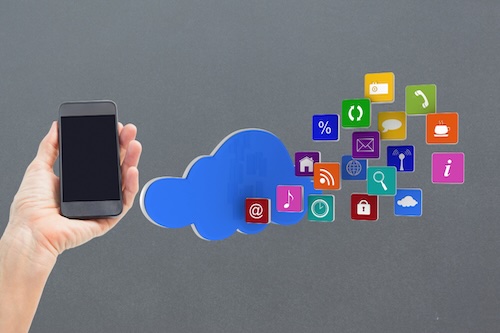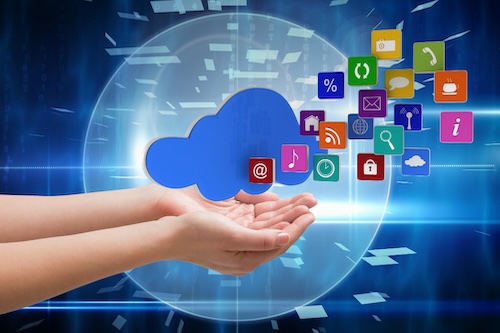The digital world is constantly buzzing with conversations, opinions, and user-generated content. For brands, this represents both an opportunity and a risk. On one hand, social platforms are goldmines of insights about consumer behavior, trends, and influencer impact. On the other, they are spaces where brand reputation can be threatened by a viral post, negative sentiment, or association with the wrong influencer.
This is where social listening APIs and social screening APIs come into play. While both tools deal with monitoring and analyzing online activity, they serve different purposes. Understanding their differences and knowing when to prioritize one over the other can define whether a brand thrives in the digital age or struggles with unseen risks.
Understanding the Basics: Social Listening vs Social Screening
Before brands decide which API to prioritize, it’s important to grasp what each of these technologies does and how they contribute to brand risk monitoring.
What is Social Listening?
Social listening is the process of tracking conversations, mentions, keywords, and sentiment around a brand or industry across digital platforms. With a social listening API, companies can integrate this capability into their systems and access real-time data about consumer sentiment, competitor activity, and trending topics.
Key aspects of social listening include:
- Tracking mentions of a brand, product, or campaign.
- Monitoring hashtags and keywords for emerging trends.
- Analyzing audience sentiment (positive, neutral, negative).
- Benchmarking competitors.
For example, if a new product is launched, social listening can measure how audiences react online, highlighting what resonates and what creates friction.
👉 Explore how APIs power advanced monitoring with Phyllo’s Social Listening API.
What is Social Screening?
Social screening is the practice of evaluating an individual’s or influencer’s digital history to identify potential risks before collaborations or hiring decisions. Unlike social listening, which focuses on broad audience conversations, social screening digs into a person’s online activity to detect red flags that may harm brand reputation.
Key aspects of social screening include:
- Analyzing influencer posts for controversial or non-compliant content.
- Flagging discriminatory, offensive, or risky behavior.
- Ensuring alignment with brand values and compliance standards.
- Preventing reputational damage before partnerships are finalized.
In influencer marketing, social screening has become essential. For instance, if a fitness brand partners with an influencer later exposed for spreading misinformation, the damage can extend to the brand itself.
👉 See how brands ensure safe collaborations with Phyllo’s Social Screening solutions.
Why Brands Can’t Ignore APIs for Risk Monitoring
APIs are the backbone of modern digital tools. They allow brands to securely and efficiently access the data they need, whether it’s real-time consumer insights or detailed influencer background checks.
According to Statista, the global market size of social media listening platforms is projected to reach $6 billion by 2028, driven by the demand for smarter engagement strategies and risk monitoring. Similarly, businesses are increasingly investing in screening APIs to ensure compliance and mitigate brand risks.
In other words, both technologies are no longer optional. The real challenge is knowing which API to prioritize at different stages of brand growth and campaigns.
Social Listening API: Benefits and Use Cases
Social listening APIs transform raw online conversations into actionable insights. They give brands a pulse on what’s happening across digital communities.
Benefits of Social Listening APIs
- Real-time consumer insights: Identify trends as they happen.
- Competitor benchmarking: Track rival campaigns and audience engagement.
- Crisis management: Detect negative sentiment early and respond promptly.
- Campaign measurement: Evaluate the effectiveness of hashtags, campaigns, and influencer-driven promotions.
Use Cases in Action
- Crisis Detection: A food brand can detect a surge in negative sentiment due to a recall and respond quickly.
- Product Innovation: Tech companies use listening tools to gather user complaints and feedback for future product improvements.
- Influencer Campaigns: By monitoring branded hashtags, marketers can assess how well influencer campaigns are driving engagement.
Social Screening: Benefits and Use Cases
Social screening acts as a safeguard against reputational risks that come from influencer or employee associations.
Benefits of Social Screening
- Brand safety assurance: Prevents associations with risky individuals.
- Compliance: Ensures adherence to advertising standards and regulations.
- Risk mitigation: Identifies red flags before campaigns are launched.
- Long-term trust: Builds credibility by partnering only with authentic voices.
Use Cases in Action
- Influencer Vetting: Before hiring an influencer, a sportswear brand conducts a screening to ensure no history of offensive or non-inclusive remarks.
- Employee Screening: Companies use social screening in recruitment to verify candidates’ online behavior aligns with organizational values.
- Partnership Due Diligence: Brands entering collaborations can screen the digital profiles of potential partners to avoid hidden risks.
👉 Learn how social screening ensures brand safety with Phyllo’s Influencer Vetting tools.
Key Differences Between Social Listening and Social Screening
While both are critical for brand risk monitoring, their focus areas differ significantly.
When Should Brands Prioritize Social Listening?
Brands should lean on social listening when the goal is to understand large-scale audience behavior, competitive landscapes, and brand perception.
Best Scenarios for Social Listening:
- Launching a new product or campaign.
- Benchmarking against competitors.
- Tracking trending conversations in real-time.
- Measuring the ROI of influencer-driven campaigns.
For instance, if a brand wants to know how its new hashtag campaign is performing compared to competitors, social listening provides the data.
When Should Brands Prioritize Social Screening?
Brands should prioritize social screening when selecting individuals for collaboration, recruitment, or partnerships. The stakes are much higher when a single influencer or employee misstep can cause reputational damage.
Best Scenarios for Social Screening:
- Vetting influencers before partnerships.
- Hiring employees for brand-facing roles.
- Partnering with organizations where value alignment is crucial.
- Mitigating compliance or regulatory risks.
For example, a finance brand must ensure its influencers or partners haven’t shared misleading investment advice in the past.
Striking the Right Balance: The Case for Combining Both APIs
Rather than viewing social listening and social screening as competing tools, brands should see them as complementary. Together, they form a robust risk monitoring and engagement framework.
Benefits of Combining Both
- End-to-end protection: Screening ensures safe partnerships, while listening monitors campaign success.
- Proactive + Preventive: Listening provides early signals of crises, while screening prevents risks before they happen.
- Data-backed decision making: More accurate insights when both APIs inform strategies.
👉 For deeper data-driven intelligence, explore Phyllo’s Social Media Intelligence solutions.
Stats That Prove the Importance of APIs in Brand Risk Monitoring
- According to Sprout Social, 62% of brands say social listening helps them improve crisis management.
- A PwC report found that 60% of CEOs consider reputational risk among the top three threats to business growth.
- Data from Influencer Marketing Hub shows that 67% of brands now conduct influencer background checks before partnerships.
These numbers highlight why both social listening APIs and social screening tools are vital to modern brand strategies.
FAQs:
1. What is a social listening API?
A social listening API is a tool that allows brands to monitor online conversations, mentions, hashtags, and sentiment at scale. It integrates into existing systems to provide real-time consumer insights and trend analysis. It’s especially useful for campaign tracking and competitive benchmarking.
2. How does social screening differ from social listening?
Social screening evaluates individual influencers, employees, or partners for risk, while social listening tracks broader audience conversations. Screening is about prevention, while listening is about monitoring and insights.
3. Why is brand risk monitoring important?
Brand risk monitoring ensures that organizations are protected from reputational, compliance, and partnership-related risks. A single misstep, like working with a controversial influencer, can lead to long-term brand damage. APIs provide the automation and accuracy needed to scale this protection.
4. Can social listening replace social screening?
No, because they serve different purposes. Social listening measures public sentiment, while social screening identifies individual risks. The best strategy is to use them together for comprehensive brand protection.
5. How can influencer vetting benefit from social screening?
Social screening allows brands to evaluate influencers for past controversial posts, compliance risks, or misaligned values. This ensures partnerships are safe and aligned with brand reputation goals.
6. Which industries benefit most from social listening APIs?
Industries like retail, tech, finance, and healthcare benefit greatly, as they rely on real-time insights to improve campaigns and customer experience. Any industry that engages directly with large audiences can leverage listening for better decision-making.
7. What role does social media intelligence play in brand safety?
Social media intelligence combines both listening and screening data into one holistic view. It helps brands connect insights with actions, ensuring both engagement and safety.
👉 Learn more at Phyllo’s Social Media Intelligence platform.
8. What’s the future of brand risk monitoring with APIs?
The future lies in AI-enhanced APIs that provide predictive analytics, real-time alerts, and deeper integrations across platforms. Brands will increasingly rely on APIs not just to react but to anticipate risks before they escalate.










.avif)


.avif)